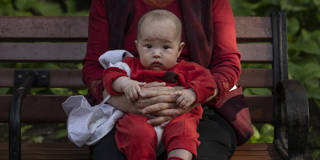
China Shuts Down Its International-Adoption Machine
When it comes to alleviating the severe demographic crisis that China faces, prohibiting international adoptions of Chinese children amounts to a mere drop in the bucket. Still, the government's decision to do so is significant, as it reflects a long-overdue recognition that people should not be viewed as a burden.
MADISON, WISCONSIN – China’s government has just announced that it will no longer allow foreign adoptions of Chinese children, except by blood relatives or step-parents. The move reflects China’s changing perspective on population growth, with anxiety about overpopulation supplanted by fears that a rapidly aging, shrinking population threatens the country’s future.